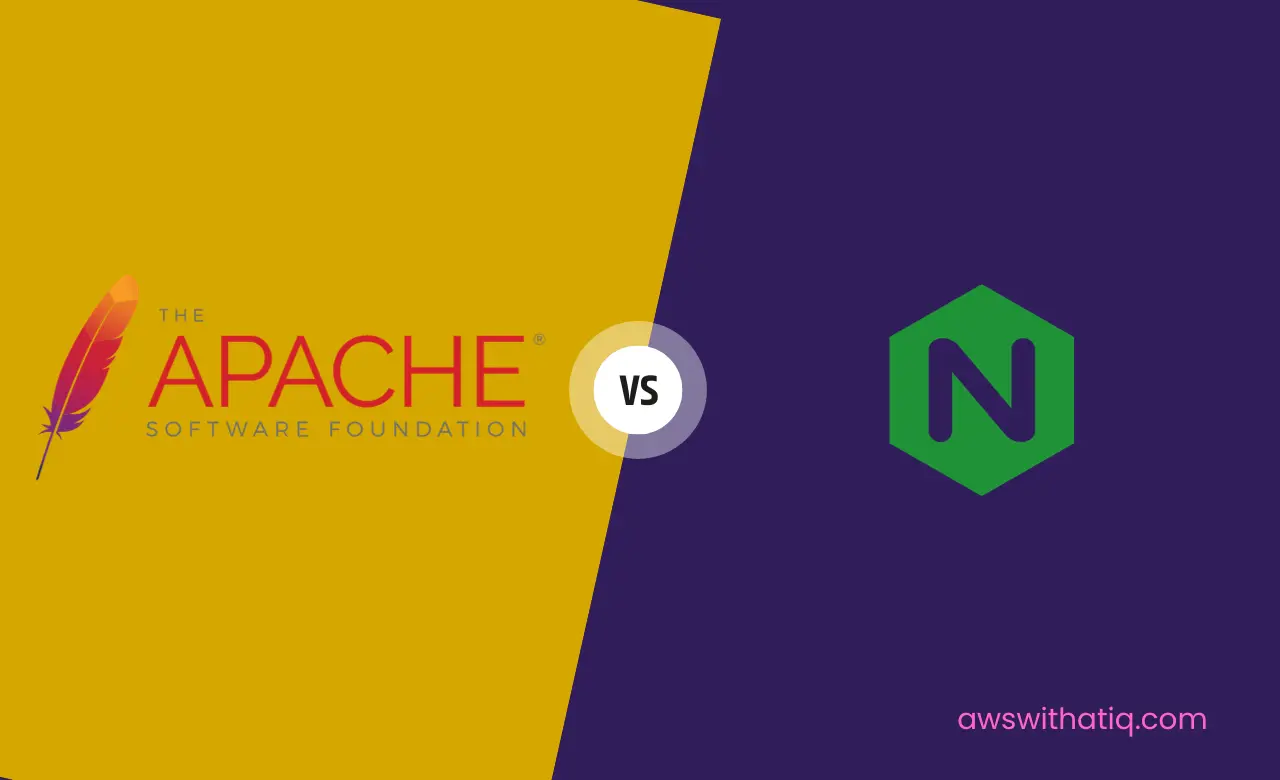The world of web servers is vast, but two giants have consistently stood out: Apache and NGINX. Both are reputable, open-source web server technologies that have powered millions of websites over the years. While Apache, introduced by the Apache Software Foundation in 1995, is often heralded for its resilience and widespread adoption, NGINX (pronounced “engine-x”), introduced in 2004, is celebrated for its performance and modern architecture. This post delves into the nuances that differentiate these two powerhouses.
Table of Contents
Architecture & Design
Apache:
Apache’s architecture is process-driven. When a request is made to an Apache server, it spawns a new thread or process to handle that request. This Multi-Process Module (MPM) approach allows Apache to be highly extensible. Different MPMs can be swapped in or out, depending on the needs of the website or application. For example, the “prefork” MPM spawns individual processes for each request, while the “worker” MPM uses a combination of processes and threads.
NGINX:
Contrastingly, NGINX employs an event-driven architecture. Instead of creating a new process or thread for each request, NGINX uses a small set of worker processes that handle multiple connections each. This non-blocking, asynchronous approach is particularly efficient when dealing with static content and high-concurrent connections, leading to lower memory usage and improved scalability.
Performance & Scalability
Over the years, numerous benchmarks have attempted to crown either Apache or NGINX as the performance king. Here’s a concise overview:
- Static Content: NGINX typically shines when serving static content due to its event-driven nature. The asynchronous handling allows it to serve multiple requests with fewer resources.
- Dynamic Content: For dynamically generated content, the differences are less stark. Apache’s mod_php (for PHP applications) can often deliver dynamic content efficiently. However, with the right tuning and caching strategies, both servers can excel in this realm.
- High Traffic & Concurrency: NGINX’s architecture allows it to outperform Apache in scenarios with a high number of concurrent connections. While Apache might require more resources (like memory) to manage a surge in traffic, NGINX remains lightweight and efficient.
- Scalability: Both servers are scalable, but their strategies differ. Apache scales by spawning more processes or threads, which increases memory usage. NGINX, on the other hand, scales horizontally, handling more connections per worker process without a significant increase in memory.
In summary, while NGINX often holds an edge in raw performance and scalability, especially for static content and high-concurrency scenarios, Apache’s versatility and configurability allow it to remain a top choice for a variety of web applications.
Flexibility & Customization
Apache:
Apache’s greatest strength lies in its modular architecture. With numerous modules available, administrators can extend its capabilities with ease:
- Modules: Apache has an extensive library of modules, such as
mod_sslfor SSL support, andmod_rewritefor URL manipulation. These modules allow administrators to customize and extend Apache’s capabilities to suit their specific needs. - Configuration: The
.htaccessfile provides webmasters with the ability to override system-wide configurations at the directory level, allowing for granular control over website behavior.
NGINX:
NGINX’s configuration is central and directive-based, focusing on clarity and simplicity:
- Modules: While NGINX also supports modules, some essential ones need the server to be recompiled to include them. However, the emergence of dynamic modules in recent versions has eased this somewhat.
- Configuration: Unlike Apache, NGINX doesn’t support directory-level configurations like
.htaccess. This means faster performance (since no checking of configuration overrides is required) but less flexibility at the directory level.
Security
Security is paramount in the world of web servers. Both Apache and NGINX have commendable records, with their own set of strengths and considerations.
Apache:
- ModSecurity: Apache users can leverage ModSecurity, a popular Web Application Firewall (WAF), to protect against various threats.
- Directory Protection: With
.htaccess, directory-level access control is feasible, providing an added layer of security. - Regular Updates: Apache has a long-standing history of prompt updates and patches whenever vulnerabilities are discovered.
NGINX:
- Rate Limiting: Built-in capabilities like request rate limiting help protect against brute-force attacks.
- Isolation: NGINX’s architecture is such that even if one worker process is compromised, others remain unaffected.
- Less Complexity: Being younger and having a less complex codebase, NGINX historically had fewer vulnerabilities than Apache. However, with popularity comes attention, and it’s crucial to stay updated with security patches.
Usability & Administration
Apache:
- Configuration Ease: For many, especially those familiar with cPanel or similar control panels, Apache’s configuration can feel more intuitive. Tools like
a2ensiteanda2dismodsimplify site and module management. - Logging: Comprehensive logging with customizable log formats.
- Errors: Apache provides verbose error messages, aiding in troubleshooting.
NGINX:
- Central Configuration: NGINX’s config file is well-structured, which can be easier for systematic configuration. However, the absence of
.htaccessmeans all changes require a server reload. - Status Module: The NGINX status module provides real-time insights into server health and activity.
- Clear Documentation: NGINX’s official documentation is concise and clear, making it easier for newcomers to get started and for professionals to dive deep.
Ecosystem & Community
Apache:
- Long-Standing Community: Given its age, Apache boasts a vast community. Over the years, countless contributors have aided in its development, ensuring its stability and robustness.
- Integration & Compatibility: Apache’s widespread adoption means many third-party tools and software have built-in support or integrations tailored for it.
- Resources & Forums: Websites like the Apache Lounge or the Apache HTTP Server Forum are teeming with experts and enthusiasts ready to lend a helping hand.
NGINX:
- Rapidly Growing Ecosystem: While younger than Apache, NGINX’s community has grown rapidly, reflecting its increasing adoption rate.
- Third-Party Modules: There’s a surge in third-party modules designed for NGINX, expanding its functionalities.
- Dedicated Platforms: The NGINX community is active on its official forums and on platforms like Stack Overflow, offering guidance and sharing expertise.
Use Cases & Suitability
Apache:
- Shared Hosting: Apache’s
.htaccesssupport makes it particularly suitable for shared hosting environments where individual users may need directory-level configuration control. - Flexible Web Applications: With its range of modules, Apache is versatile and can be tailored for various web applications.
- Legacy Systems: Given its long history, Apache is often the default for older systems and applications requiring specific legacy support.
NGINX:
- Reverse Proxy: NGINX shines as a reverse proxy, handling requests and passing them to other servers, often sitting in front of Apache to serve static content swiftly.
- High-Concurrency Scenarios: Websites with heavy traffic and numerous simultaneous connections can benefit from NGINX’s event-driven architecture.
- Load Balancing: NGINX’s built-in load balancing capabilities make it ideal for distributing incoming traffic across multiple servers.
Licensing & Costs
Apache:
- Apache License 2.0: Apache is open source and released under the Apache License 2.0, allowing for free use, modification, and distribution, even in commercial contexts.
- Cost Considerations: While the software itself is free, costs may arise from necessary hardware, support contracts, or specialized modules.
NGINX:
- Dual Licensing: NGINX offers both an open-source version and a commercial product called NGINX Plus. The latter comes with additional features, support, and integrations.
- Cost Factors: For businesses, transitioning to NGINX Plus might be a consideration. While it incurs costs, it provides benefits in terms of advanced features, official support, and optimized performance.
Conclusion
The debate between Apache and NGINX isn’t a matter of one being universally superior to the other. Instead, it comes down to the specific needs and contexts of the projects they’re employed in. Apache, with its rich history and modular design, provides unparalleled flexibility, making it suitable for a diverse range of web applications. NGINX, on the other hand, stands out with its event-driven architecture, excelling in high-concurrency scenarios and as a reverse proxy.
Both servers have stood the test of time, each catering to different strengths. For webmasters, developers, and businesses, the choice hinges on evaluating their specific requirements, performance needs, and the kind of traffic they expect.
Frequently Asked Questions (FAQ)
1. Can Apache and NGINX be used together?
Yes! Many websites utilize NGINX as a reverse proxy in front of Apache. This allows them to leverage NGINX’s strength in serving static content rapidly, while Apache handles dynamic content.
2. Which is easier to configure for beginners?
While subjective, many beginners find Apache’s configuration, especially with tools like cPanel, to be more intuitive. However, NGINX’s centralized configuration can be simpler once you’re familiar with its syntax.
3. How do they handle SSL/TLS?
Both servers support SSL/TLS. Apache uses the mod_ssl module, while NGINX includes SSL support in its core. Both can implement Let’s Encrypt for free SSL certificates.
4. Which is more secure, Apache or NGINX?
Both have strong security records. The key is to keep either server updated and properly configured. Using additional tools like firewalls and security modules (like ModSecurity for Apache) can bolster security.
5. Which one is more popular?
As of the last data cut-off, NGINX had seen a surge in adoption, especially among high-traffic websites. However, Apache still has a significant market share and is extensively used across various types of websites.


